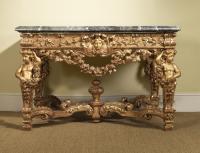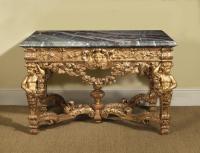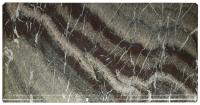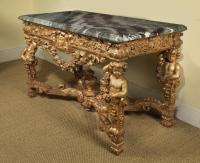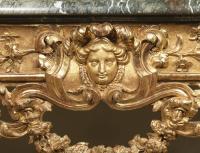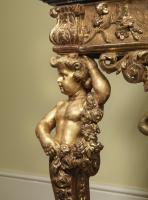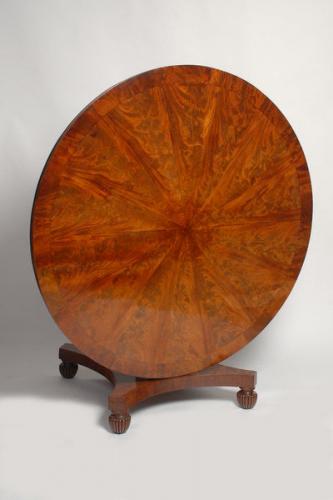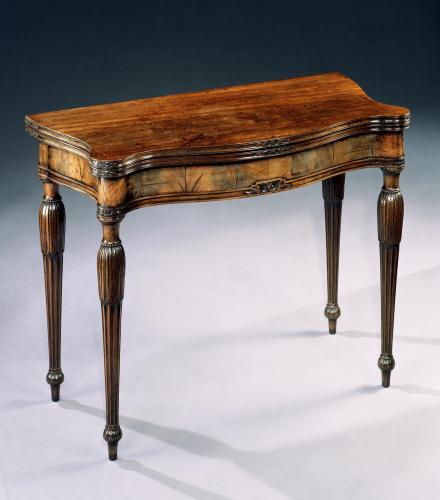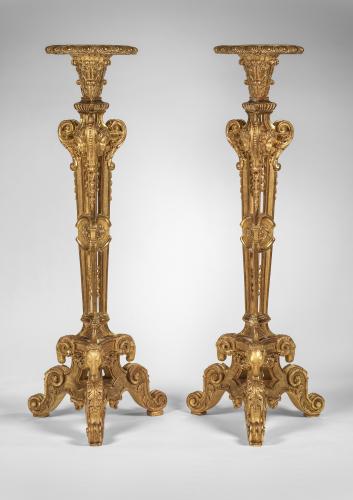
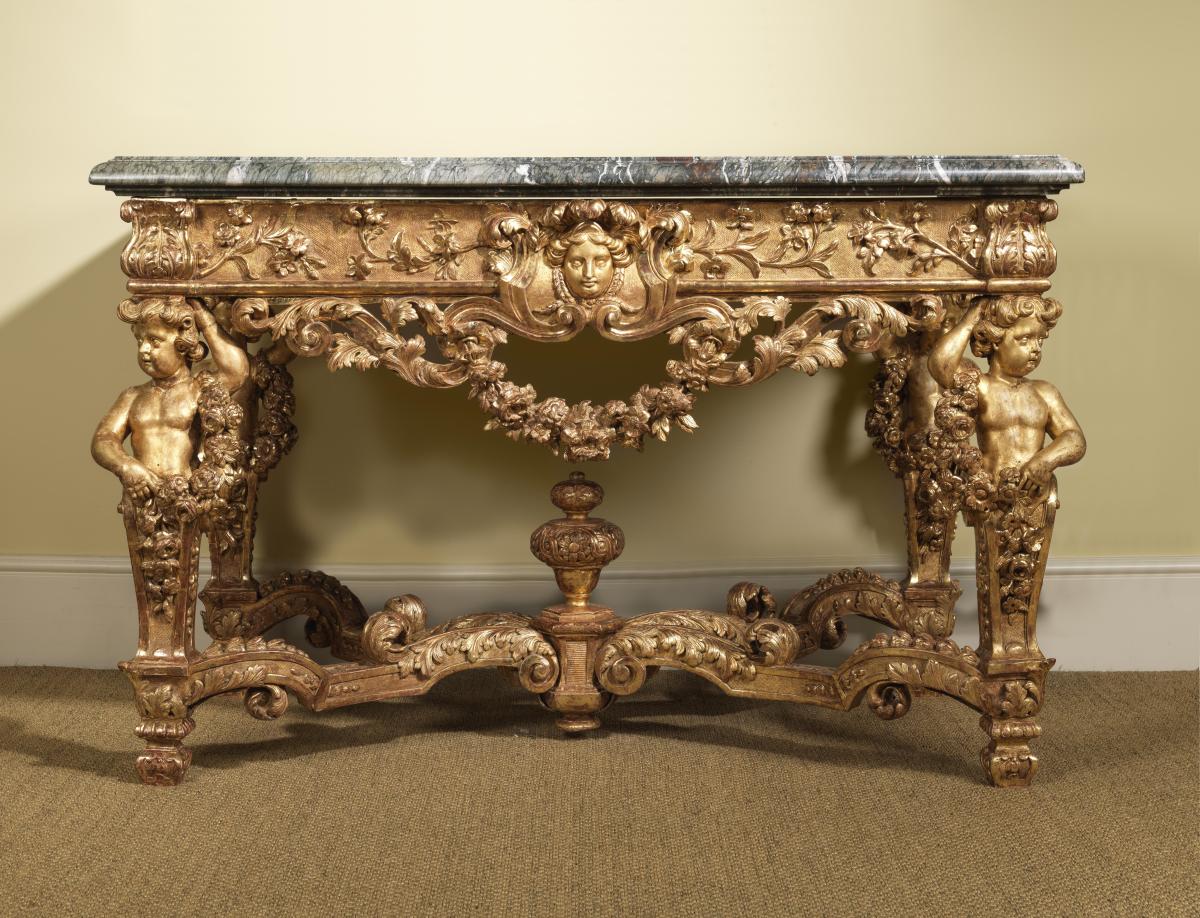
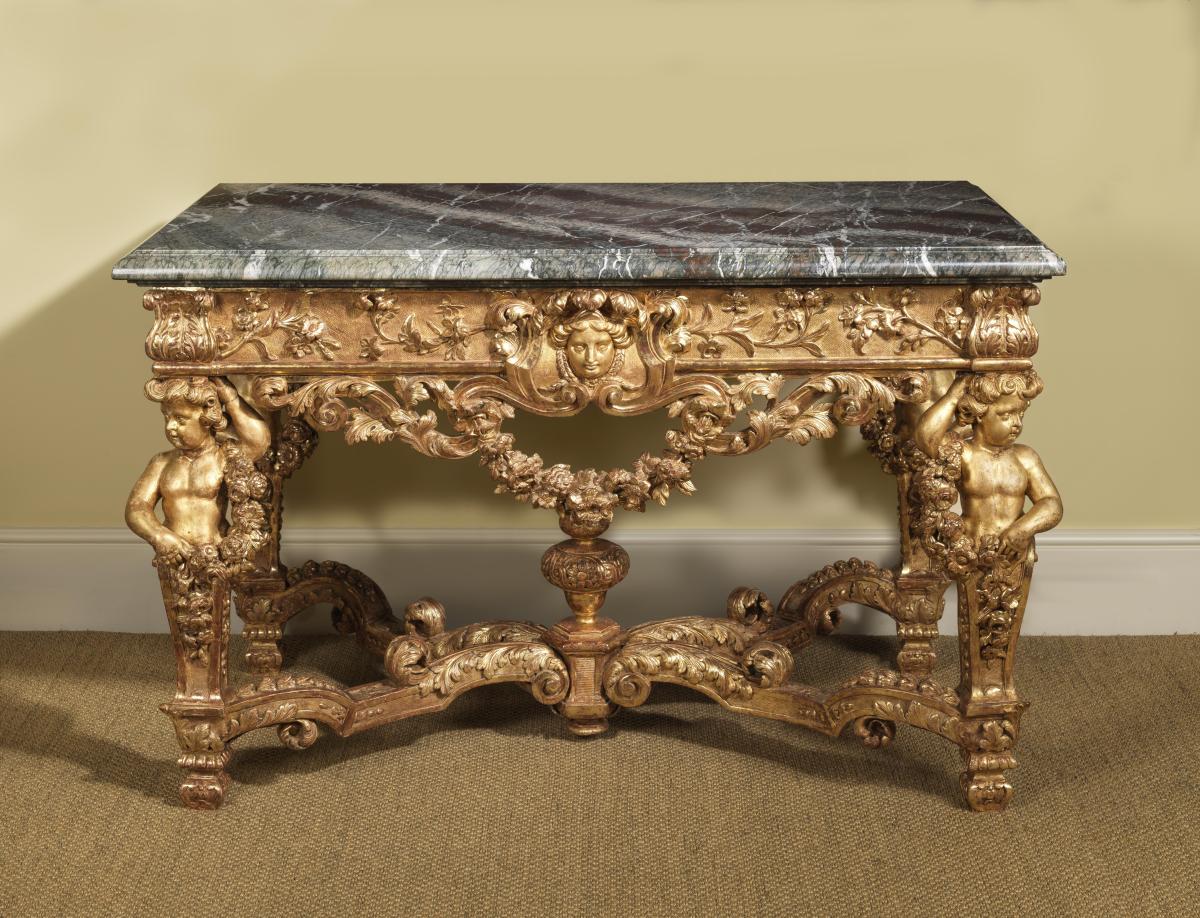
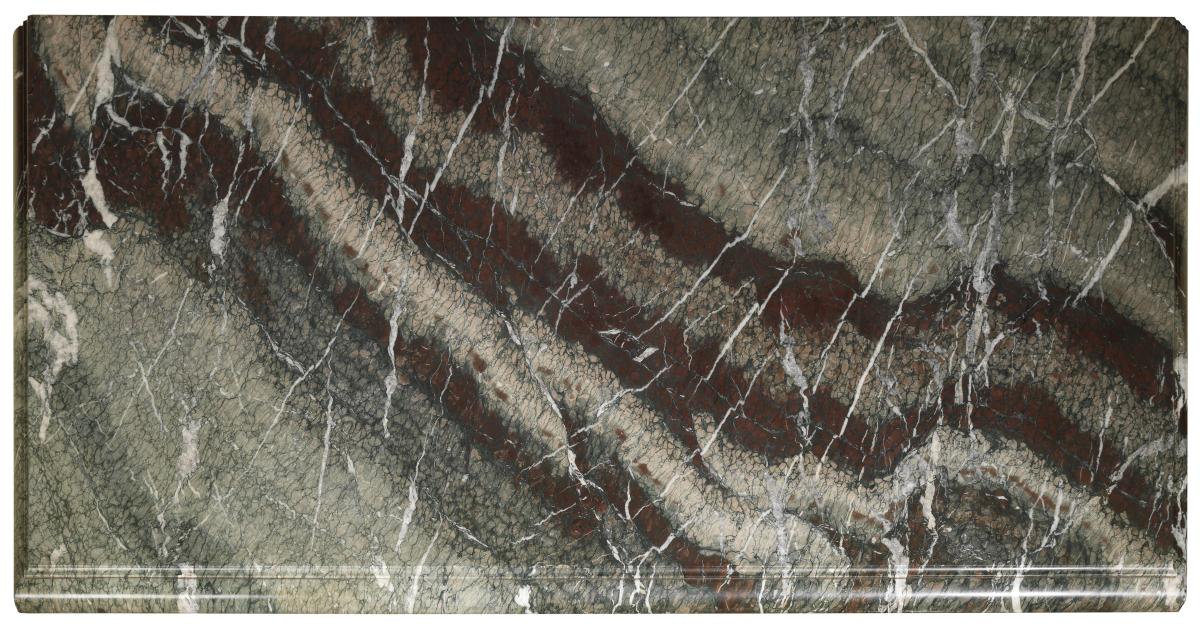
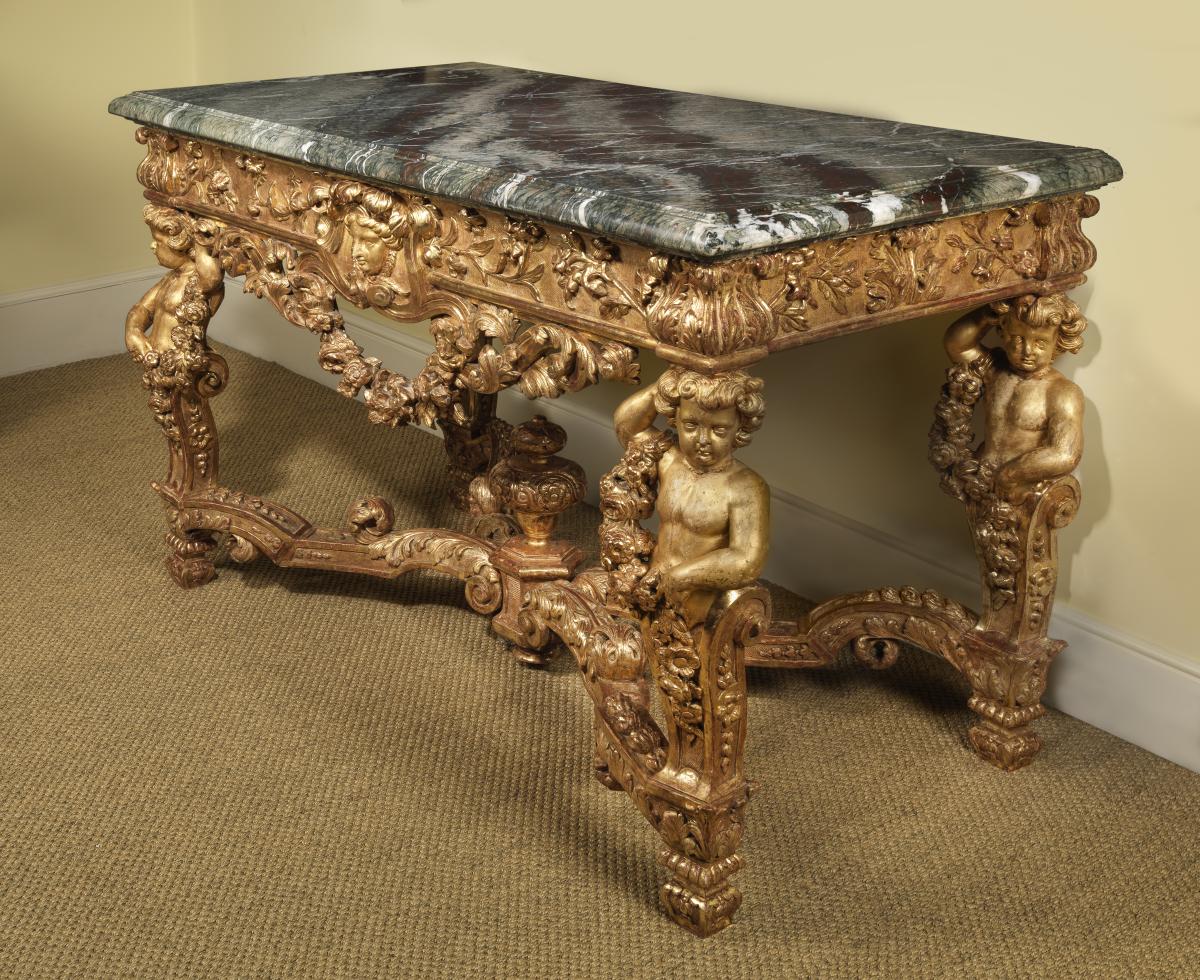
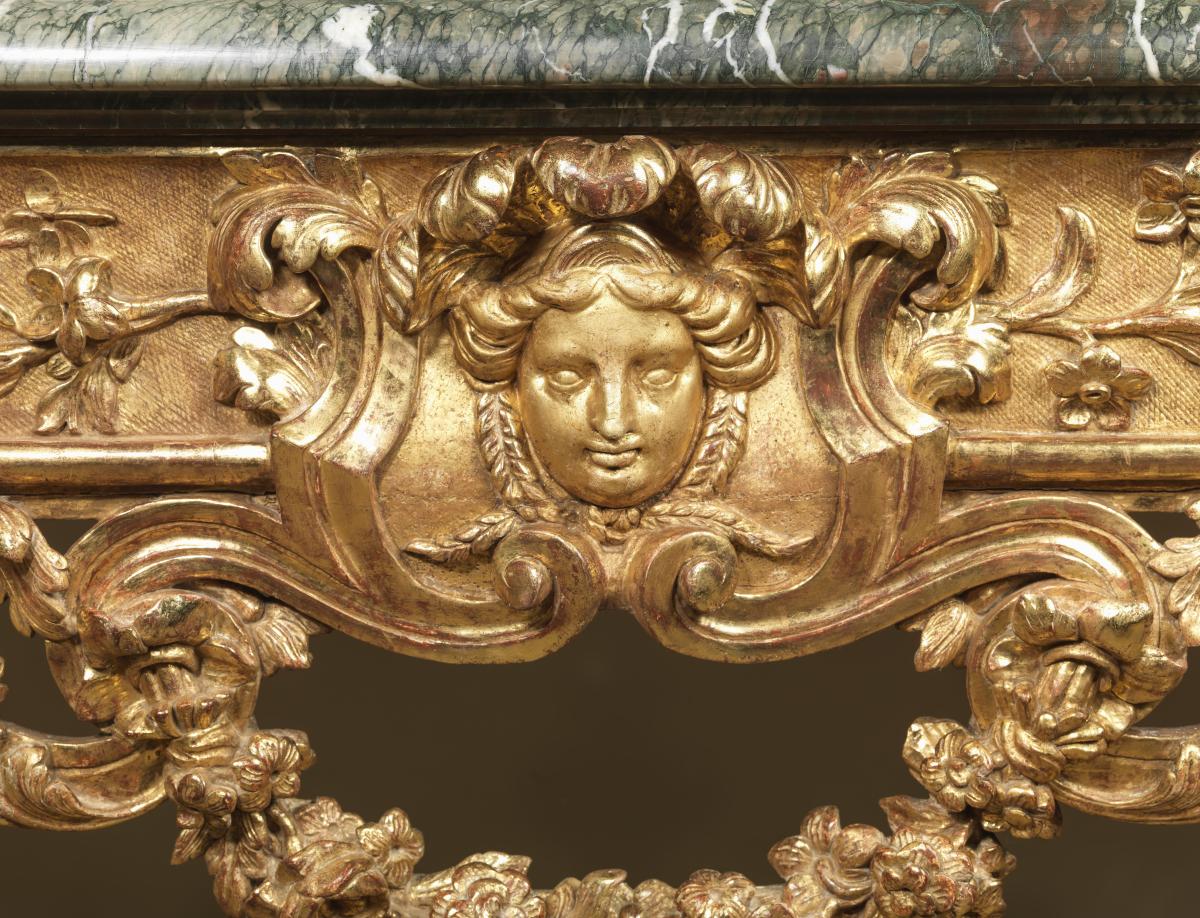
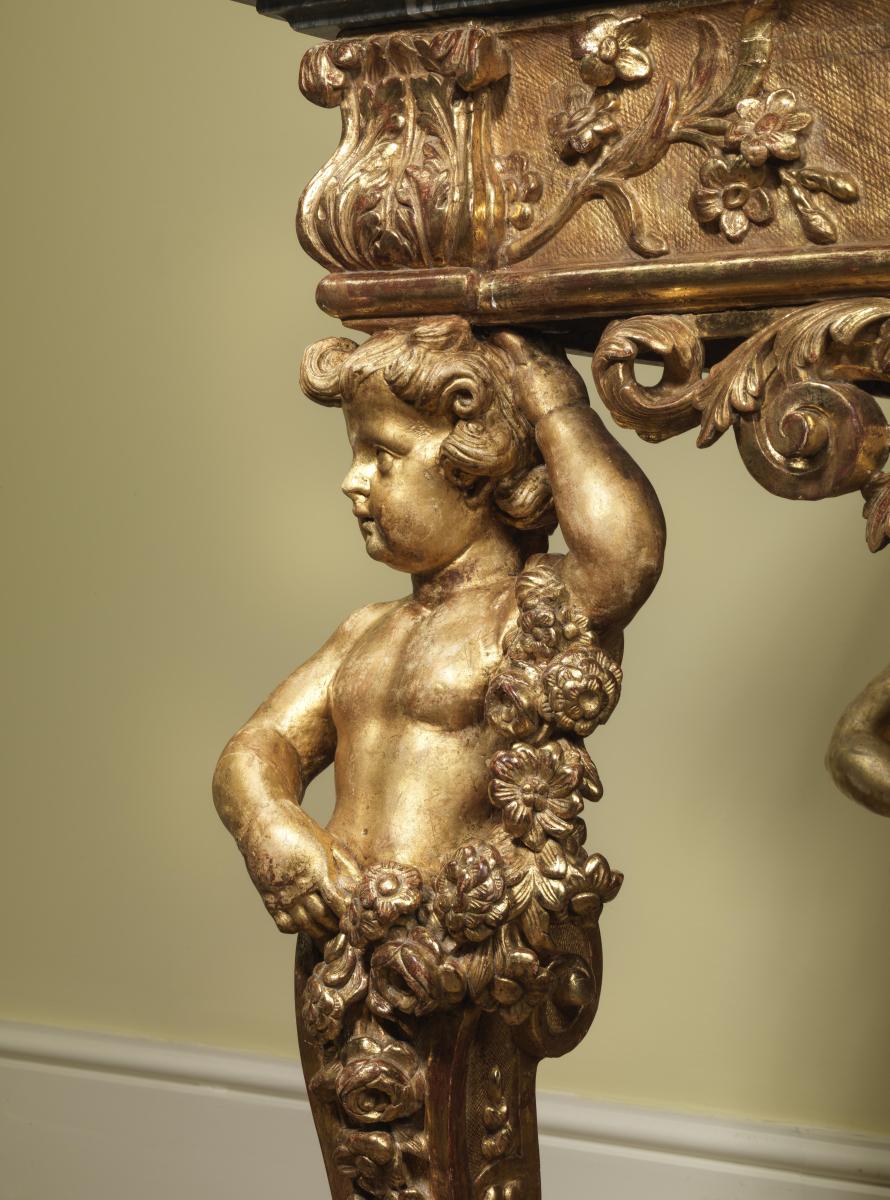

Price on application
This object is eligible for a Certificate of BADA Provenance
The BADA Standard
- Since 1918, BADA has been the leading association for the antiques and fine art trade
- Members are elected for their knowledge, integrity and quality of stock
- Our clients are protected by BADA’s code of conduct
- Our dealers’ membership is reviewed and renewed annually
- Bada.org is a non-profit site: clients deal directly with members and they pay no hidden fees
A Very Fine and Rare William and Mary Giltwood Table attributed to Jean Pelletier. Circa 1688.
With a carved Campan marble top above a rectangular frame with a carved female head in the center of a deep apron surrounded by foliage on either side carved on top of a trellis gesso pattern. On four legs carved with male torso and having swags of flowers and connecting to a stretcher with a carved urn in the center and resting on four square carved feet.
Jean Pelletier (1681 – 1705)
The Pelletier family of carvers and gilders left France in the 1680’s probably to escape persecution as Huguenots and settled in Amsterdam. By 1682 Jean Pelletier was established in London and by the end of the decade his two sons Rene and Thomas, both active until 1712 had joined him. Their introduction to Royal service was due to the patronage of the Francophile Duke of Montagu, the courtier responsible, as Master of the Great Wardrobe, for the furnishing of all Royal Palaces. Montagu held office from 1671 – 1685 and from 1689 – 1709. For tables, mirrors and stands – the principal furniture types in which they specialized – the Pelletier’s drew heavily on the designs of French contemporaries employed by Louis XIV; the engraved furniture of Jean Le Pautre (1618 – 1682) and his son Pierre (1660 – 1744). Known examples by Pelletier are in the Royal collection, including a pair of Candle-stands which were commissioned to furnish William III state apartments at Hampton Court, two pairs of tables for the Queen’s Gallery at Hampton Court and a single table made for Queen Anne.
Campan Marble
From the first Century BC the Romans quarried this marble from the Campan Valley until it was closed in Medieval times before re opening in the 17th Century. Louis XIV during his reign reserved for his exclusive use all the production which was used extensively in the building of Versailles and other Royal Patronage. It continued to be used in the 18th and has been used for table tops as well as precious objects.
1st Duke of Montagu (1638-1709)
The1st Duke was the former Ambassador to the court of Louis XIV at Versailles and Master of the Royal Wardrobe to Charles II and William and Mary. He re-built Montagu House in Bloomsbury for the second time after the house was burnt down in 1686. The House was then rebuilt to the designs of an otherwise unknown Frenchman called Pouget.
Montagu House was by some margin the grandest private residence constructed in London in the last two decades of the 17th century and William III after visiting in 1689 regarded Montagu’s London home as a Palace. The walls of the principal rooms were decorated with mythological scenes by the leading French painter Charles de Lafosse and over fifty flower paintings were purchased from Louis XIV flower painter, Jean Baptiste Monnoyer. Montagu owned the Mortlake Tapestry Manufactory and so many of the rooms were lined with tapestries. Large looking glasses in glass or silver frames, and marble tables with gilt frames and accompanying candlestands, reflecting French influence are listed in the 1709 inventory. The inventory does not give a detailed description or measurements of the tables, so it is not possible to identify a table from the 1709 inventory. In 1733 Bloomsbury began to decline gently from a fashionable aristocratic district to a more middle-class enclave, and the 2nd Duke of Montagu abandoned his father's house to move to Whitehall. He built himself a more modest residence and some of the contents was moved to this new London House. The remainder of the contents was distributed to Montagu’s other houses, Beaulieu in Hampshire, Boughton in Northamptonshire, Ditton in Buckinghamshire and to their villa in Blackheath. Montagu House in Bloomsbury was sold to the Trustees of the British Museum in 1759 and was the home of that institution until it was demolished in the 1840’ to make way for larger premises.
Provenance
Although there is no proof to confirm that it was made for Montagu House there are several reasons for suggesting that it was highly likely to have been made for the 1st Duke. What we know for certain is that the duke introduced the Pelletier’s to William and Mary and subsequently to Queen Anne and to have done so would have meant that he is almost certain to have ordered items from them before. This table has an earlier more Baroque feel than the tables commissioned for Queen Anne and Montagu House had been furnished before the Pelletier started making furniture for the Royal family. The Campan marble which looks as though it is the original would have been difficult to obtain as Louis XIV had the exclusive use of all its production and Montagu would have seen it in Versailles and so would have known about its existence. At Boughton there are several Boulle items alleged to have been given to Montagu by Louis XIV when he was Ambassador to the King in Paris, so it is not inconceivable to suggest that Louis XIV gave or allowed Montagu to have this beautiful marble top.
Dimensions
137 x 72.5 x 90 cmThe BADA Standard
- Since 1918, BADA has been the leading association for the antiques and fine art trade
- Members are elected for their knowledge, integrity and quality of stock
- Our clients are protected by BADA’s code of conduct
- Our dealers’ membership is reviewed and renewed annually
- Bada.org is a non-profit site: clients deal directly with members and they pay no hidden fees


